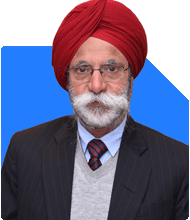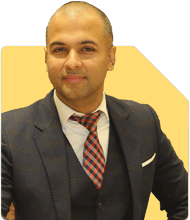Ramalingam Kalirajan |8204 Answers |Ask -Follow
Mutual Funds, Financial Planning Expert - Answered on Jul 10, 2024
He has an MBA in finance from the University of Madras and is a certified financial planner.
He is the director and chief financial planner at Holistic Investment, a Chennai-based firm that offers financial planning and wealth management advice.... more

I have invested about 30 lakhs in mutual funds over last 8 years as sip, which is now grown upto about 57 lakhs. I want 2 crores by 2030.How can I get it?
Evaluating Current Investments
Your disciplined SIP approach has yielded significant growth, reflecting your commitment to long-term wealth accumulation. This foundation sets the stage for further expansion towards your Rs. 2 crores goal.
Setting Clear Financial Goals
Identifying specific financial goals, such as accumulating Rs. 2 crores by 2030, provides a roadmap for effective financial planning. This clarity helps in structuring your investments accordingly.
Pathways to Reach Rs. 2 Crores by 2030
Increasing SIP Contributions
Gradually increasing your SIP contributions annually can accelerate wealth accumulation. This approach harnesses the power of compounding, where earnings on investments generate additional earnings over time.
Diversifying Investment Portfolios
Diversification across various mutual fund categories balances risk and return potential. Allocating funds strategically into equity, debt, and balanced funds aligns with your risk tolerance and growth objectives.
Harnessing Compounding Effect
Compounding allows your investments to grow exponentially over the long term. Reinvesting earnings ensures that your money works harder for you, maximizing returns.
Benefits of Actively Managed Funds
Actively managed funds offer the expertise of professional fund managers who actively monitor and adjust portfolios. This proactive management aims to capitalize on market opportunities and mitigate risks.
Disadvantages of Index Funds
Index funds mirror market indices passively, limiting potential for outperformance. They lack flexibility in adapting to market changes and may underperform actively managed funds during volatile periods.
Managing Direct vs. Regular Funds
Direct funds require individual management and decision-making, posing challenges for inexperienced investors. Regular funds through a Certified Financial Planner (CFP) offer expert guidance and oversight, optimizing investment strategies.
Mitigating Risks in Mutual Funds
Understanding and managing risks is crucial. Equity funds carry market volatility risk but offer higher returns. Debt funds provide stability but with lower growth potential. Balancing both minimizes overall portfolio risk.
Planning for Market Cycles
Anticipating market cycles ensures timely adjustments in investment strategies. Investing systematically through SIPs averages out market fluctuations, enhancing long-term returns.
Final Insights
Achieving a target of Rs. 2 crores by 2030 through disciplined SIP investments and strategic portfolio management is feasible. Diversification, compounding, and expert guidance play pivotal roles in optimizing growth and mitigating risks.
Best Regards,
K. Ramalingam, MBA, CFP,
Chief Financial Planner,
www.holisticinvestment.in
You may like to see similar questions and answers below
Ramalingam Kalirajan |8204 Answers |Ask -Follow
Mutual Funds, Financial Planning Expert - Answered on Jun 04, 2024
Ramalingam Kalirajan |8204 Answers |Ask -Follow
Mutual Funds, Financial Planning Expert - Answered on Jun 25, 2024
Ramalingam Kalirajan |8204 Answers |Ask -Follow
Mutual Funds, Financial Planning Expert - Answered on Jul 25, 2024
Ramalingam Kalirajan |8204 Answers |Ask -Follow
Mutual Funds, Financial Planning Expert - Answered on Dec 27, 2024
Samraat Jadhav |2250 Answers |Ask -Follow
Stock Market Expert - Answered on Apr 08, 2025
T S Khurana |438 Answers |Ask -Follow
Tax Expert - Answered on Apr 08, 2025
T S Khurana |438 Answers |Ask -Follow
Tax Expert - Answered on Apr 08, 2025
Mihir Tanna |1043 Answers |Ask -Follow
Tax Expert - Answered on Apr 08, 2025
Harsh Bharwani |79 Answers |Ask -Follow
Entrepreneurship Expert - Answered on Apr 08, 2025
Milind Vadjikar |1157 Answers |Ask -Follow
Insurance, Stocks, MF, PF Expert - Answered on Apr 08, 2025
Milind Vadjikar |1157 Answers |Ask -Follow
Insurance, Stocks, MF, PF Expert - Answered on Apr 08, 2025
Milind Vadjikar |1157 Answers |Ask -Follow
Insurance, Stocks, MF, PF Expert - Answered on Apr 08, 2025
Milind Vadjikar |1157 Answers |Ask -Follow
Insurance, Stocks, MF, PF Expert - Answered on Apr 08, 2025
Ramalingam Kalirajan |8204 Answers |Ask -Follow
Mutual Funds, Financial Planning Expert - Answered on Apr 08, 2025



























.jpg)